I’m sure all digital marketers agree with me on this — SEO is full of untapped opportunities.
Keywords you don’t even know exist could drive you relevant traffic. Small content improvements could boost your rankings, if only you knew what to fix. And various authority sites you’ve never heard about could potentially send you quality links.
But there is one particular opportunity that I know could help you change your site’s visibility. Forever.
And that opportunity is winning the customer micro-moments.
Read on to learn how you could position your site to win those micro-moments and attract new, high-quality traffic.
Intrigued? Let’s get started.
What are Micro-Moments?
The term Micro-Moment describes a situation, as Google puts it:
… when people reflexively turn to a device—increasingly a smartphone—to act on a need to learn something, do something, discover something, watch something, or buy something.
As the search engine points out: "They are intent-rich moments when decisions are made and preferences shaped.”
And given the phenomenal growth of the smartphone usage and mobile search, the rise of micro-moments comes as no surprise. After all, as of February 2019, 96% of Americans own a mobile device, and 81% own a smartphone.
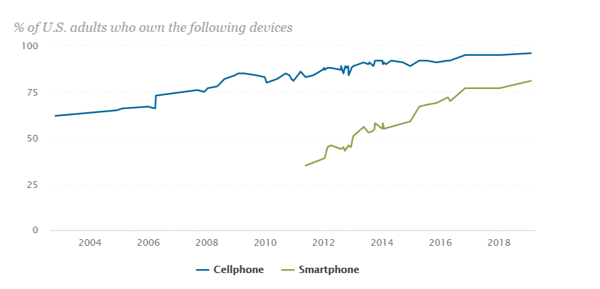
(Image Source: Pew Research Center)
Plus, research shows that we check our phones 150 times per day. That means your customers do, too, which makes "micro moment marketing" so powerful — and necessary for offering a positive consumer experience.
Mobile Devices Provide Access
Modern mobile devices allow us to fulfill any intent we have. We can conduct a Google search no matter where we are.
Be it seeking information on how to fix a garage door to finding an electrician to do it for us, ordering food to discovering new ideas to tackle; we can access so much information on our smartphones.
According to Google, we typically turn to smartphones to fulfill one of the following intents:
- Know
- Do
- Go
- Buy
The first two intents focus on researching, learning, and obtaining new information.
Whether you intend to learn more about a person, a new holiday destination, or you're asking Google to help you discover how to do something, you exhibit an intent to know or do.
 (This search query signals an intent to know.)
(This search query signals an intent to know.)
The go intent defines a desire to go somewhere and interact with the physical world. This intent often has a local intent, such as finding a business nearby.
 (A search query with the intent to go.)
(A search query with the intent to go.)
Finally, as the name suggests, the intent to buy describes a situation when we’re ready to make a specific purchase and become actual buyers.
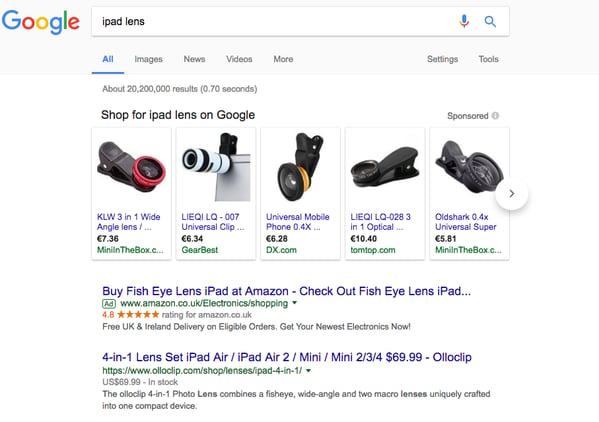 (A search query with the intent to buy a product.)
(A search query with the intent to buy a product.)
And as I’m sure you’ve already noticed, Google’s SERPs change depending on your intent.
- When you use the search engine to obtain information, Google displays various rank types, like the Knowledge Graph, news, or the Answer Box (commonly known as a Featured Snippet).
- When you search for local information, such as a local business recommendation, you will most likely see the local pack.
- And the buying intent triggers ads and product recommendations.
This is largely because the search engine aims to deliver the exact information directly the user to provide the best search experience possible. Google's goal is to answer users' needs with as much information — through the most useful content type — before the user clicks on a result.
But here’s the interesting part:
For the most part, marketing strategies tend to focus on the final intent: buy.
However, targeting users who exhibit the know or do intents can help position your website to capture users from the early stages of the customer journey.
The problem? To do that, you need to understand your target audience’s individual intent behind each micro-moment.
Let’s look at some strategies that help you identify keyword and content opportunities to target (and win!) the customers' micro-moments, all of which leads to lead generation and conversions.
Recommended Reading: How to Apply User Intent Across the Entire Content Marketing Workflow
#1. Identifying SERP Features
Monitoring the presence of various SERP features — Answer Boxes, local listings, etc. — can help you identify the intent Google associates behind a keyword.
As you remember, the search engine displays different information, depending on which intent a search query relates to. And so, identifying SERP features per keyword query will help you define which category the search engine associates them to.
For example, if a keyword or keyword set contains many videos, Answer Box results, or images, it might suggest the know or do intent, since the results are informational in nature.
 (SERP Features view within Rank Intelligence.)
(SERP Features view within Rank Intelligence.)
However, keywords that trigger many images or product listing ads (PLAs) clearly relate to intent to buy, for example.
But how does this information help you?
Knowing the intent allows you to easily decide what content would work best for the specific keyword.
Similarly, as Laura Beatty pointed out in a webinar, monitoring SERP features can reveal opportunities to leverage existing assets to boost your content’s relevancy to the customer intent.
She calls this strategy "Content Augmentation"— discovering content types that you could incorporate into your landing pages to make them more intent-relevant. For example, for a phrase that triggers video results, you could consider adding a video to the landing page. And ideally, giving it priority on a page, to increase the chances of it appearing in the SERPs.
#2. “People Also Ask” Suggestions
More and more, your customers no longer have to click on a search result to obtain the information or knowledge they’re looking for. Instead, Google presents it to them in the form of the Answer Box.
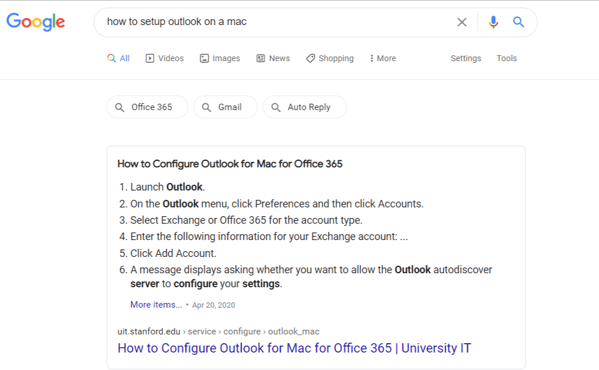 (The Answer Box offers an answer to a query directly on the SERP.)
(The Answer Box offers an answer to a query directly on the SERP.)
And you already know that one of the prerequisites for appearing in the Answer Box is to provide information for which your customers ask the search engine. The problem, however, is that you need the insights to understand what their questions are.
Luckily, there is a way. Often, apart from the Answer Box, the search engine also displays other questions users have asked in relation to the topic.
It uses the “People also ask” section to include additional information a user might find useful.
 (People Also Ask offers similar search queries.)
(People Also Ask offers similar search queries.)
And naturally, you could manually research questions included in the section and make web pages or blog posts that answer these questions.
But there is a simpler way!
In seoClarity, you can access People Also Ask suggestions for your managed keywords with a simple filter, and discover the exact content you should create to target the Answer Box.
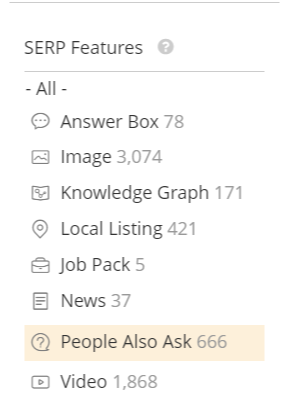
(Filter by PAA to reveal keywords that trigger this SERP feature.)
#3. Competitive Research
This goes without saying — analyzing your competitors’ strategies can reveal many untapped opportunities to target various intents.
For example, you could analyze your competitor’s keywords to identify additional questions suggestions from the People Also Ask section:
 (People Also Ask research for a competitor domain.)
(People Also Ask research for a competitor domain.)
Or, identify their content that already appears in the Answer Box with just a simple filter.
The same applies to identifying other SERP features and establishing keyword opportunities for the know and do moments:
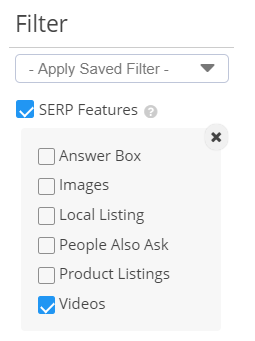 (Locate different SERP features to understand different intents.)
(Locate different SERP features to understand different intents.)
Final Thoughts
Winning the micro-moments offers an unimaginable opportunity for SEOs to position their website right in front of customers in the early stages of the buying cycle.
And what’s important, do it by delivering on their specific search intents: know and do.
Hopefully, after reading this post, you understand the idea and the value of targeting those micro-moments, and also know where to begin building the right content assets to deliver the best user experience possible.
To understand your customers' micro-moments, schedule a demo of the seoClarity platform today.
Editor's Note: This post was originally published in June 2017 and has been updated for accuracy and comprehensiveness.




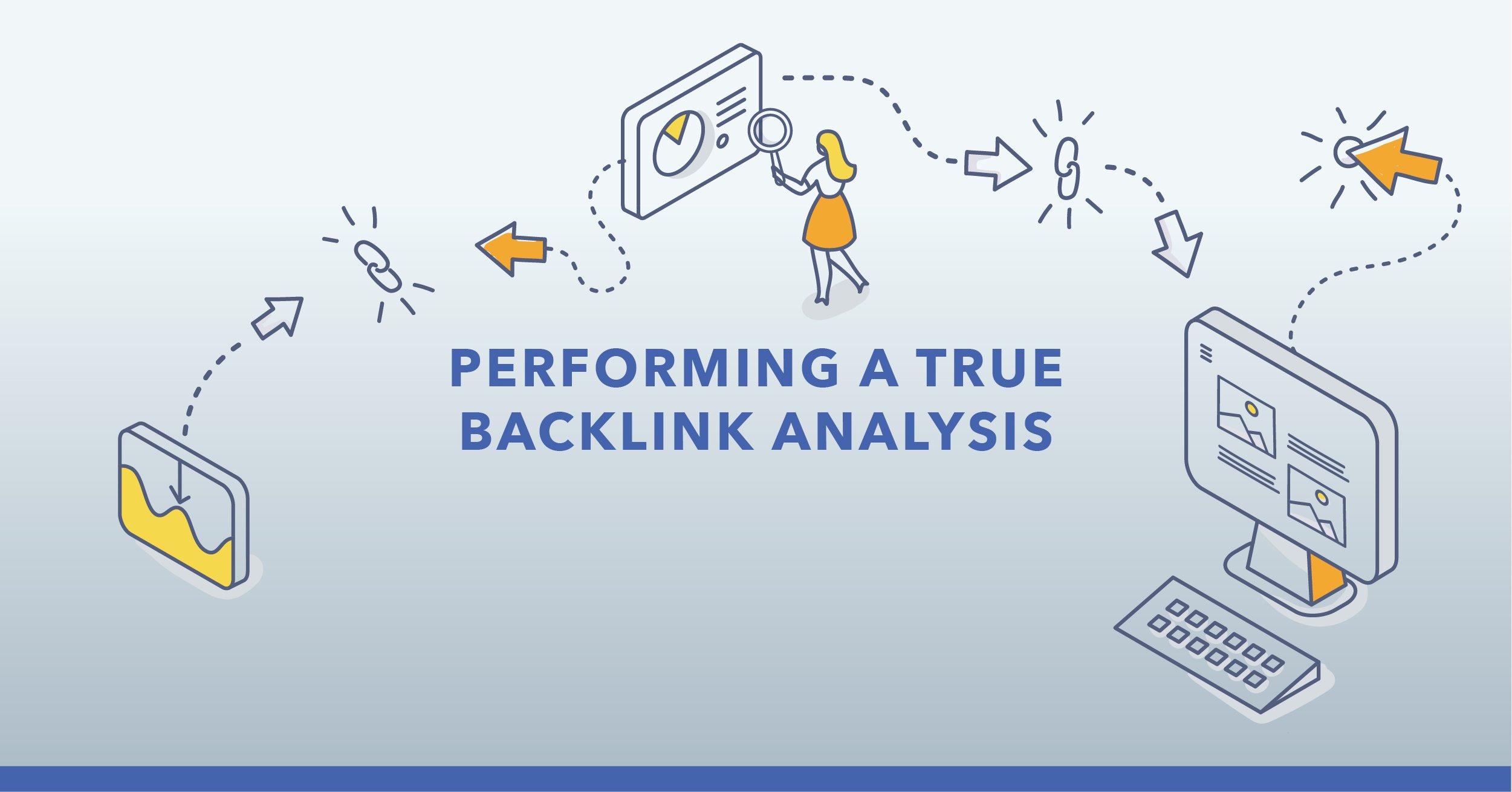


Comments
Currently, there are no comments. Be the first to post one!